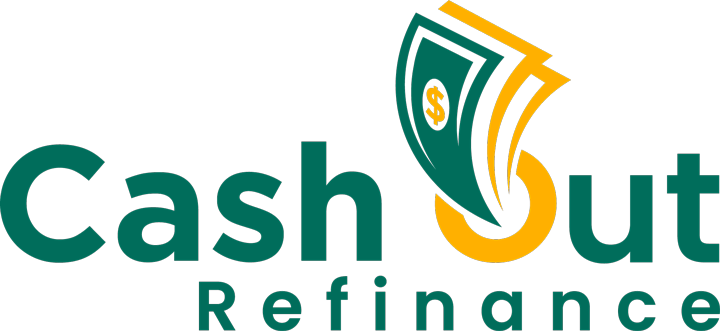Fixed-Rate Mortgage: Understanding 30-Year, 20-Year, and 15-Year Loan Terms
A fixed-rate mortgage (FRM) is the most common type of home loan, offering predictable monthly payments and a stable interest rate throughout the life of the loan. However, choosing the right mortgage term—30 years, 20 years, or 15 years—can significantly impact your financial future.
Each mortgage term has its own benefits and drawbacks, affecting your monthly payments, total interest costs, and the speed at which you build home equity. This guide will explore the differences between these three loan terms to help you decide which fixed-rate mortgage best fits your financial goals.
What is a Fixed-Rate Mortgage?
A fixed-rate mortgage is a home loan with an interest rate that remains the same for the entire loan term. Unlike an adjustable-rate mortgage (ARM), which fluctuates over time, a fixed-rate mortgage provides predictable payments and long-term financial stability.
Key Features of Fixed-Rate Mortgages
✔ Fixed Interest Rate – Your interest rate remains the same for the life of the loan.
✔ Stable Monthly Payments – Helps with budgeting and financial planning.
✔ Multiple Loan Terms Available – Choose from 30-year, 20-year, or 15-year options.
✔ Better for Long-Term Homeownership – Ideal for buyers who plan to stay in their home.
✔ No Surprises – Unlike adjustable-rate mortgages, your rate won’t increase unexpectedly.
Now, let’s compare 30-year, 20-year, and 15-year fixed-rate mortgages in detail.
Comparing 30-Year, 20-Year, and 15-Year Fixed-Rate Mortgages
| Loan Term | Monthly Payment | Interest Rate | Total Interest Paid | Best For |
|---|---|---|---|---|
| 30-Year Fixed | Lowest | Highest | Highest | Buyers who want the lowest monthly payment |
| 20-Year Fixed | Moderate | Lower than 30-Year | Lower than 30-Year | Buyers who want to pay off their home faster |
| 15-Year Fixed | Highest | Lowest | Lowest | Buyers who want to build equity quickly |
1. 30-Year Fixed-Rate Mortgage: The Most Popular Option
✔ Lowest monthly payments
✔ Higher total interest over time
✔ Best for long-term affordability
✔ Great for first-time homebuyers
Example:
- Loan Amount: $300,000
- Interest Rate: 7.00%
- Monthly Payment: $1,996
- Total Interest Paid Over 30 Years: $418,527
Best For:
✅ Homebuyers who need lower monthly payments
✅ Buyers who plan to stay in the home long-term
✅ Those looking to maximize cash flow
2. 20-Year Fixed-Rate Mortgage: A Middle Ground
✔ Lower interest costs than a 30-year loan
✔ Moderate monthly payments
✔ Faster home equity build-up
✔ Shorter loan term than a 30-year but still affordable
Example:
- Loan Amount: $300,000
- Interest Rate: 6.75%
- Monthly Payment: $2,272
- Total Interest Paid Over 20 Years: $245,167
Best For:
✅ Homebuyers who can afford moderate monthly payments
✅ Borrowers who want to save on interest but don’t want payments as high as a 15-year loan
✅ Homeowners looking to pay off their loan earlier
3. 15-Year Fixed-Rate Mortgage: The Fastest Payoff Option
✔ Highest monthly payments
✔ Lowest total interest paid
✔ Builds home equity the fastest
✔ Best for borrowers who want financial freedom sooner
Example:
- Loan Amount: $300,000
- Interest Rate: 6.50%
- Monthly Payment: $2,610
- Total Interest Paid Over 15 Years: $170,009
Best For:
✅ Homebuyers who can afford higher monthly payments
✅ Those who want to own their home debt-free sooner
✅ Borrowers who want the lowest possible interest costs
How Much Interest Do You Pay Over Time?
One of the biggest differences between 30-year, 20-year, and 15-year fixed-rate mortgages is the total amount of interest paid over the life of the loan.
| Loan Term | Total Interest Paid on a $300,000 Loan |
|---|---|
| 30-Year Fixed | $418,527 |
| 20-Year Fixed | $245,167 |
| 15-Year Fixed | $170,009 |
Key Takeaway:
🏠 A 30-year loan costs significantly more in interest than a 15-year loan but offers lower monthly payments.
Pros & Cons of Each Fixed-Rate Mortgage Term
🏡 30-Year Fixed Mortgage
✔ Lower monthly payments
✔ Easier to qualify for larger home loans
✔ More budget flexibility
❌ More interest paid over time
❌ Takes longer to build equity
🏡 20-Year Fixed Mortgage
✔ Balances affordability with interest savings
✔ Builds equity faster than a 30-year loan
✔ Moderate monthly payments
❌ Higher payments than a 30-year loan
🏡 15-Year Fixed Mortgage
✔ Lowest total interest paid
✔ Faster homeownership
✔ Builds home equity quickly
❌ Higher monthly payments may strain budget
❌ Less financial flexibility
Which Fixed-Rate Mortgage Term is Right for You?
Choose a 30-Year Fixed Mortgage If:
✅ You want lower monthly payments
✅ You plan to stay in your home for a long time
✅ You need more budget flexibility
Choose a 20-Year Fixed Mortgage If:
✅ You want to pay off your loan faster than 30 years
✅ You want lower interest costs but don’t want the high payments of a 15-year loan
✅ You want a balance between affordability and early payoff
Choose a 15-Year Fixed Mortgage If:
✅ You want to save the most on interest
✅ You have room in your budget for higher payments
✅ You want to pay off your home faster
Final Thoughts: Choosing the Best Fixed-Rate Mortgage
A fixed-rate mortgage provides stability and predictability, making it one of the best choices for home financing.
🔹 The 30-year loan offers lower monthly payments and flexibility.
🔹 The 20-year loan balances affordability with interest savings.
🔹 The 15-year loan builds equity quickly and saves the most on interest.
💡 Before choosing a mortgage term, consider your financial goals, budget, and long-term plans. Speak with a mortgage professional to determine the best option for you.

Fixed-Rate Mortgage: 30-Year, 20-Year, and 15-Year Terms for Refinance and Cash-Out Refinance
A fixed-rate mortgage (FRM) is one of the most popular loan options for homebuyers and homeowners looking to refinance or access home equity through a cash-out refinance. With stable interest rates and predictable monthly payments, fixed-rate mortgages provide financial security over the long term.
If you’re considering a refinance or cash-out refinance, choosing the right loan term—30 years, 20 years, or 15 years—is crucial to achieving your financial goals. In this guide, we’ll explore:
✅ What a fixed-rate mortgage is
✅ How 30-year, 20-year, and 15-year terms compare for refinance and cash-out refinance
✅ Pros and cons of each loan term
✅ How monthly payments differ
✅ How interest costs change over time
✅ Which option is best for your financial goals
✅ Real-life examples of different mortgage term scenarios
What is a Fixed-Rate Mortgage?
A fixed-rate mortgage is a home loan with an interest rate that remains constant for the entire term of the loan. Unlike an adjustable-rate mortgage (ARM), which fluctuates over time, a fixed-rate mortgage provides predictable payments, making it easier to budget.
Key Features of Fixed-Rate Mortgages
✔ Fixed Interest Rate – No fluctuations throughout the life of the loan.
✔ Stable Monthly Payments – Helps with long-term budgeting and financial planning.
✔ Multiple Loan Terms Available – Choose from 30-year, 20-year, or 15-year options.
✔ Better for Long-Term Homeownership – Ideal for those who plan to keep their home for an extended period.
✔ No Rate Surprises – Unlike adjustable-rate mortgages, your rate won’t change unexpectedly.
Now, let’s explore how these loan terms compare in refinance and cash-out refinance scenarios.
Refinance vs. Cash-Out Refinance: Understanding the Difference
Refinance
A traditional refinance replaces your existing mortgage with a new loan that has better terms, such as:
✔ Lower interest rate
✔ Shorter loan term (moving from a 30-year to a 20-year or 15-year loan)
✔ Lower monthly payment
Cash-Out Refinance
A cash-out refinance lets homeowners tap into their home equity by replacing their existing mortgage with a new, larger loan and receiving the difference in cash. This option is ideal for:
✔ Home renovations and improvements
✔ Debt consolidation
✔ Funding education expenses
✔ Investing in real estate or other assets
Now, let’s compare 30-year, 20-year, and 15-year fixed-rate mortgages for refinancing and cash-out refinancing.
Comparing 30-Year, 20-Year, and 15-Year Fixed-Rate Mortgages for Refinance and Cash-Out Refinance
| Loan Term | Monthly Payment | Interest Rate | Total Interest Paid | Best For |
|---|---|---|---|---|
| 30-Year Fixed | Lowest | Highest | Highest | Lower monthly payments & cash-out refinance |
| 20-Year Fixed | Moderate | Lower than 30-Year | Lower than 30-Year | Balance between affordability & interest savings |
| 15-Year Fixed | Highest | Lowest | Lowest | Fastest way to pay off mortgage & save on interest |
30-Year Fixed-Rate Mortgage: The Most Popular Option
✔ Lowest monthly payments
✔ More flexibility for cash-out refinance
✔ Ideal for homeowners who want budget-friendly payments
Example: Refinance Scenario
- Loan Amount: $300,000
- Interest Rate: 7.00%
- Monthly Payment: $1,996
- Total Interest Paid Over 30 Years: $418,527
Example: Cash-Out Refinance Scenario
- Home Value: $450,000
- Existing Mortgage Balance: $250,000
- New Loan Amount: $350,000 (80% Loan-to-Value)
- Cash-Out Received: $100,000
✔ Best for homeowners who want the lowest monthly payment and need cash for major expenses.
20-Year Fixed-Rate Mortgage: A Middle Ground
✔ Faster payoff than 30-year, lower payments than 15-year
✔ Moderate monthly payment with good interest savings
✔ Ideal for those refinancing to pay off a home sooner
Example: Refinance Scenario
- Loan Amount: $300,000
- Interest Rate: 6.75%
- Monthly Payment: $2,272
- Total Interest Paid Over 20 Years: $245,167
Example: Cash-Out Refinance Scenario
- Home Value: $500,000
- Existing Mortgage Balance: $200,000
- New Loan Amount: $350,000
- Cash-Out Received: $150,000
✔ Best for homeowners who want to reduce loan length while still accessing home equity.
15-Year Fixed-Rate Mortgage: The Fastest Payoff Option
✔ Highest monthly payments but lowest total interest paid
✔ Builds home equity faster
✔ Best for those who want to be mortgage-free quickly
Example: Refinance Scenario
- Loan Amount: $300,000
- Interest Rate: 6.50%
- Monthly Payment: $2,610
- Total Interest Paid Over 15 Years: $170,009
Example: Cash-Out Refinance Scenario
- Home Value: $450,000
- Existing Mortgage Balance: $200,000
- New Loan Amount: $275,000
- Cash-Out Received: $75,000
✔ Best for homeowners who want to own their home outright faster while still taking some equity out.
Pros & Cons of Each Fixed-Rate Mortgage Term
🏡 30-Year Fixed Mortgage
✔ Lower monthly payments
✔ More cash-out flexibility
✔ Easier qualification for higher loan amounts
❌ Highest total interest paid
❌ Slower equity buildup
🏡 20-Year Fixed Mortgage
✔ Balanced approach between payment and savings
✔ Faster payoff than a 30-year loan
✔ Lower total interest than a 30-year
❌ Higher payments than a 30-year loan
🏡 15-Year Fixed Mortgage
✔ Lowest total interest paid
✔ Fastest way to own your home outright
✔ Builds equity the quickest
❌ Highest monthly payments may strain budget
Which Fixed-Rate Mortgage Term is Right for You?
Choose a 30-Year Fixed Mortgage If:
✅ You want lower monthly payments
✅ You’re using a cash-out refinance for large expenses
✅ You need more budget flexibility
Choose a 20-Year Fixed Mortgage If:
✅ You want to pay off your loan faster but still need affordability
✅ You want to reduce interest costs without the high payments of a 15-year loan
Choose a 15-Year Fixed Mortgage If:
✅ You want to save the most on interest
✅ You have room in your budget for higher payments
✅ You want to own your home debt-free sooner
Final Thoughts: Choosing the Best Fixed-Rate Mortgage for Refinance or Cash-Out Refinance
A fixed-rate mortgage offers stability and predictability, making it one of the best choices for refinancing or tapping into home equity.
💡 Before refinancing, consider your financial goals, budget, and how long you plan to stay in your home.
🏡 Ready to explore your options? Get pre-approved today!


